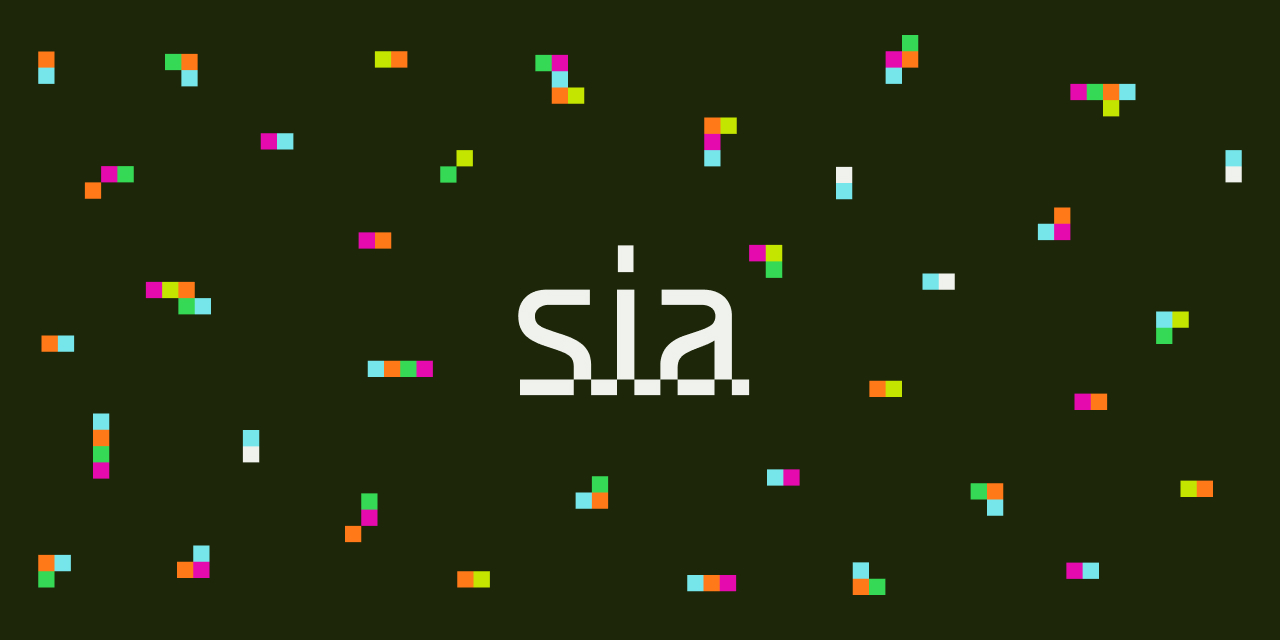
It’s easy to accept today’s cloud as a given: seamless, omnipresent, and controlled by a few tech giants. The names are familiar—Amazon, Google, Microsoft—and their dominance has made centralized infrastructure the norm. But this dominance comes at a cost. Behind the convenience lies a system driven by profit, surveillance, and control—where users are products, and privacy is an afterthought.
The Sia Foundation offers a fundamentally different vision.
As a steward of decentralized infrastructure, the Foundation believes the cloud should serve the public, not exploit it. It envisions a future where data belongs to the people who create it, not the corporations that host it. Where privacy, autonomy, and transparency aren’t perks—they’re the default.
What is the Sia Foundation?
The Sia Foundation is a non-profit organization formed to support the development, promotion, and sustainability of the Sia network—the world’s safest cloud storage, by design. Officially launched in early 2021 through the activation of the v1.5.4 hardfork, the Foundation marked a turning point for the Sia ecosystem. The Sia Foundation emerged from a proposal by Nebulous that was overwhelmingly approved by the Sia community.
Legally recognized as a 501(c)(3) non-profit, the Foundation is governed by a mission to advance data privacy, user agency, and open-source infrastructure. To date, the Sia Foundation does not rely on any venture capital or advertising to operate. The Foundation is fully self-sustainable through a transparent, protocol-enforced community donation. Each month, a small portion of newly mined Siacoin is automatically directed to the Foundation’s multisig wallet, enabling it to cover salaries, fund grants, support development, and invest in long-term growth—all without compromising its public-good focus.
This nonprofit model is nonexistent in today's tech world, and only made possible through blockchain technology. The Sia Foundation is one among a rare handful of crypto foundations that have the resources and mission alignment to build decentralized user-owned data as a true, global public good.
The Architecture of Ethical Stewardship
The Sia Foundation’s non-profit status is one of its defining features. In a tech industry dominated by profit-maximization and growth-at-all-costs models, Sia’s governance structure reflects a fundamentally different set of incentives. But while this model unlocks powerful advantages in transparency, ethics, and public alignment, it also imposes certain limitations that shape how the Foundation operates and evolves.
This non-profit model empowers the Foundation to focus squarely on user privacy, open access, and long-term infrastructure—without the pressure to monetize data or deliver returns to investors.
The Sia Foundation pursues its mission with clarity: to strengthen the Sia network and educate the public about the urgency of data privacy and ownership. Core development, grants, education, and community-building are all funded by a protocol-level subsidy rather than venture capital, allowing resources to be directed where they’re needed most—not where profit margins are highest.
This financial independence is reinforced by a high degree of transparency and public stewardship. The Foundation publishes quarterly reports detailing its operations, staffing, grant activity, and roadmap progress. Community members are encouraged to participate in online governance discussions, submit grant proposals, and contribute to shaping the direction of the ecosystem.
Operating as a non-profit also comes with strict legal and regulatory responsibilities. The Foundation must strictly avoid private benefit, lobbying, and unrelated business activity in order to maintain its status. These boundaries serve an important purpose: they preserve the Foundation’s public mission and prevent misuse of its resources.
Sia’s non-profit model remains one of the network’s greatest strengths. Since the Sia Foundation is funded perpetually, so long as the network exists, so too does the protocol-enforced community donation that supports ongoing development. This alignment between funding and mission offers a rare kind of stability—a governance model built not on quarterly earnings, but on integrity and transparency.
A Public Commitment to Transparency and Trust
Simply put, the Sia Foundation's non-profit model completely redefines what it means to sustainably fund public goods.
Cloud infrastructure should exist to serve its users, not monetize them. Communities should be able to exercise their autonomy in funding public goods that best serve their needs.
Financial optimization should not be the only incentive guiding technological development, especially where public well-being is concerned. This isn’t just a technical detail—it’s a philosophical stance.
The Foundation has no investors to please, no advertising platform to optimize, and no interest in transforming your data into profit. It is governed not by commercial cycles or market pressures, but by long-term commitments to transparency, open development, and ethical infrastructure.
To further its commitment to openness and make its operations more accessible to the public, the Foundation has launched a new website. This new site clearly defines the Foundation’s role in the ecosystem and is the living embodiment of the Foundation’s dedication to ethical infrastructure, accountability, and transparency.
In a world where centralized systems dominate and digital trust continues to erode, models like Sia’s are both rare and essential. The question is no longer just about how we store data, but who controls our access to it. Sia, as a global public good, strengthened by the Sia Foundation, doesn't just challenge the status quo—it replaces it with cloud infrastructure for the people, by the people.
More from Sia

Sia v2: A New Brand for a New Era of Decentralized Storage

Impenetrable by Design: Real Security Starts Before the First Byte Is Stored

From Disaster to Design — Engineering the Cloud for Continuous Performance


